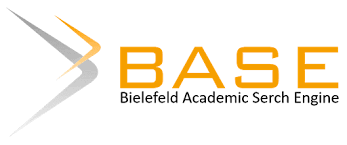KOMPARASI KETERAMPILAN BERPIKIR KRITIS DENGAN METODE PEMBELAJARAN KOOPERATIF TIPE STUDENT TEAMS ACHIEVEMENT DIVISIONS (STAD) DAN METODE PEMBELAJARAN KONVENSIONAL SISWA DI SMA NEGERI 8 DENPASAR
Keywords:
Critical Thinking, Cognitive Skills, CooperativeAbstract
The purpose of this study was to determine the differences in critical thinking skills between students of class XI with cooperative learning methods Student Teams Achievement Divisions (STAD) and conventional learning methods in SMA X. This research is a quantitative study, with a comparative method. The sample of this study amounted to 207 people obtained using cluster sampling technique. There are two groups of students, namely students with cooperative learning methods type student teams achievement divisions (STAD) and students with conventional learning methods). Critical thinking skills are measured using the Test of Everyday Reasoning (TER). The results of this study found that there were significant differences in critical thinking skills between students with cooperative learning methods Student Teams Achievement Divisions (STAD) types and students with conventional learning methods in SMA.
Downloads
References
Afandi, M., Chamalah, E., & Wardani, O. P. (2013).Model dan metode pembelajaran di sekolah. Semarang: Unissula Press.
Al-Tabany, T. I. B. (2014). Mendesain model pembelajaran inovatif, progresif, dan kontekstual: Konsep, landasan, dan implementasinya pada kurikulum 2013 (kurikulum tematik integratif/ tki). Jakarta: Prenadamedia Group.
Arikunto, S. (2016).Dasar-dasar evaluasi pendidikan (2nded). Jakarta: PT. Bumi Aksara.
Azwar, S. (2012).Penyusunan skala psikologi (2nd ed.). Yogyakarta: Pustaka Pelajar.
Buhaerah.(2012). Model pembelajaran yang efektif untuk meningkatkan keterampilan berpikir kritis (suatu persepsi guru).Gamatika, 2(2).
Esminarto, Sukowati, Suryowati, N., & Anam, K. (2016).Implementasi model stad dalam meningkatkan hasil belajar siswa.Briliant: Jurnal Riset dan Konseptual, 1(1).
Facione, N. (2013). California critical thinking test cctst test manual “the gold standard” test of critical thinking. San Jose, CA: The California Academic Press.
Facione, P. A. (1990). Critical Thinking: A statement of expert consensus for purposes of educational assessment and instruction. Research findings and recommendations. American Philosophical Association.1-51.
Facione, P. A. (1990). The California critical thinking test – college level technical report #1 experimental validation and content validity. CA: California Academic Press.
Ghofur, A., Nafisah, D., & Eryadini, N. (2016).Gaya belajar dan implikasinya terhadap kemampuan berpikir kritis mahasiswa.Journal An-nafs, 1(2).
Hidayah, R., Salimi, M., & Susiani, T. S. (2017). Critical thinking skill: Konsep dan indikator penilaian. Jurnal Taman Cendekia, 1(2).
Nurhayati, E. (2011). Bimbingan konseling & psikoterapi inovatif. Yogyakarta: Pustaka Pelajar.
Paul, R., & Elder, L. (2007).A guide for educators to critical thinking competency standards: standards, principles, performance, indicators, and outcomes with a critical thinking master rubric. Tomales, USA: The Foundation for Critical Thinking.
Redhana, I Wayan.,& Liliasari. (2008). Program pembelajaran keterampilan berpikir kritis pada topik laju reaksi untuk siswa sma.Forum Kependidikan, 27(2).
Rotherham, A. J., & Willingham, D. T. (2010).“21st-Century” skills not new, but a worthy challenge. Washington, DC: American educator.
Rosalina, T. (2016).Cross-cultural study of critical thinking in teenager.Unpublished thesis of Ural Federal University, Yekaterinburg, Rusia.
Rusman.(2010). Seri manajemen sekolah bermutu model-model pembelajaran mengembangkan profesionalisme guru. Jakarta: PT. Rajagrafindo Persada.
Sahimin, Nasution, W. N., & Sahputra, E. (2017).Pengaruh model pembelajaran dan gaya belajar terhadap hasil belajar pai siswa kelas VII SMP Negeri 1 Kabanjahe kabupaten Karo. Edu Riligia, 1(2).
Sanjaya, W. (2008). Strategi pembelajaran berorientasi standar proses pendidikan. Jakarta: Kencana.
Saptiri,& Hartono. (2015). Keefektifan cooperative learning stad dan gi ditinjau dari kemampuan berpikir kritis dan komunikasi matematis.Jurnal Riset Pendidikan Matematika,2(2), 273- 283.
Sarwi,& Liliasari. (2009). Penerapan strategi kooperatif dan pemecahan masalah pada konsep gelombang untuk mengembangkan keterampilan berfikir kritis.Jurnal Pendidikan Fisika Indonesia, 5, 90-95.
Simpson, E., & Courtney, M. (2007). The development of a critical thinking conceptual model to enhance critical thinking skill in middle- eastern nurses: a middle-eastern experience. Australian Journal of Advanced Nursing, 25(1).
Sugiyono. (2006). Metode Penelitian Kuantitatif Kualitatif dan R&D. Bandung:Alfabeta
Taniredja, H. T., Faridli, E. M., & Harmianto, S. (2011). Model-model pembelajaran inovatif. Bandung: Alfabeta.
Wibowo, N. (2016). Upaya peningkatan keaktifan siswa melalui pembelajaran berdasarkan gaya belajar di SMK Negeri 1 Saptosari. Jurnal Electronics, Informatics, and Vocational Education (ELINVO), 1(2).
Zubaidah, S. (2010). Berpikir kritis: kemampuan berpikir tingkat tinggi yang dapat dikembangkan melalui pembelajaran sains. Seminar Nasional Sains 2010 di Pascasarjana Universitas Negeri Surabaya
Downloads
Published
How to Cite
Issue
Section
License
Copyright (c) 2021 LPPM Universitas PGRI Mahadewa Indonesia

This work is licensed under a Creative Commons Attribution-NonCommercial-ShareAlike 4.0 International License.
Hak cipta mencakup hak eksklusif untuk mereproduksi dan mengirimkan artikel ini dalam semua bentuk dan media, termasuk mencetak ulang, memotret, mikrofilm dan reproduksi serupa lainnya, serta terjemahannya. Reproduksi dari bagian manapun dari jurnal ini, penyimpanannya di database dan transmisinya dengan bentuk atau media apa pun, seperti salinan elektronik, elektrostatik dan mekanis, fotokopi, rekaman, media magnetik, dan lain-lain, akan diizinkan hanya dengan izin tertulis dari penerbit jurnal.







1_(1).jpg)











